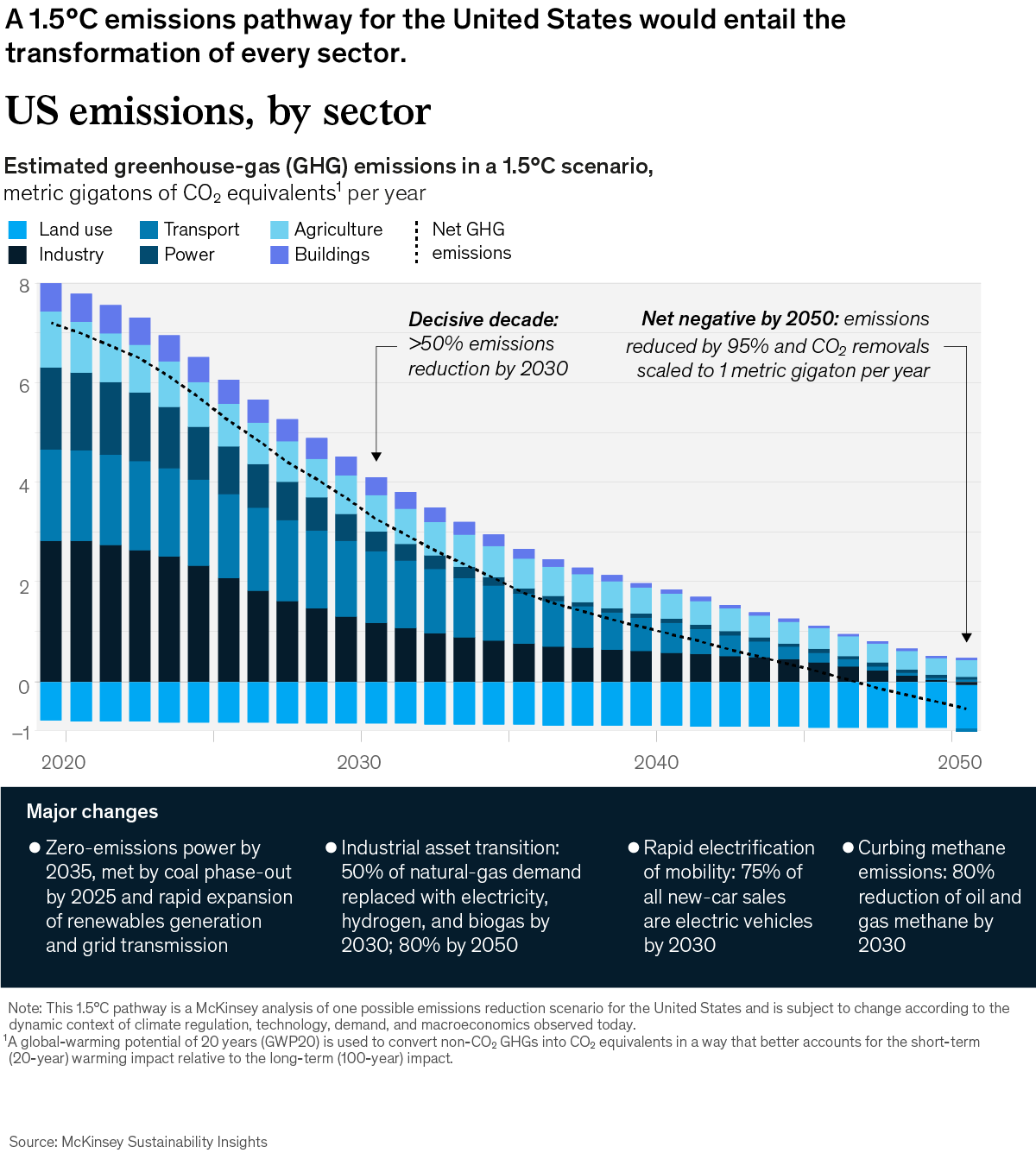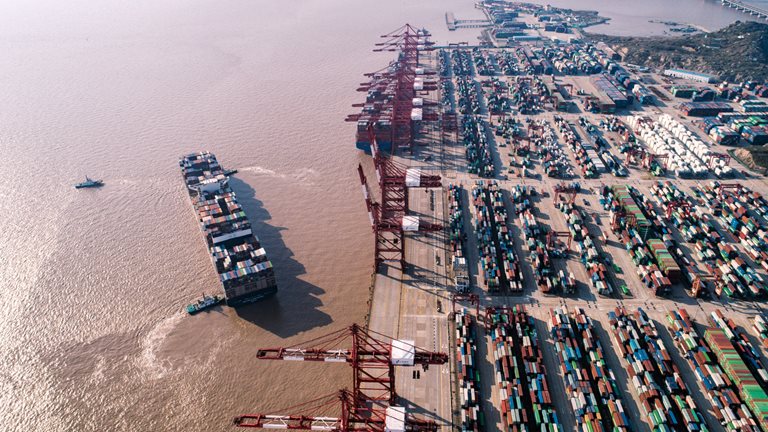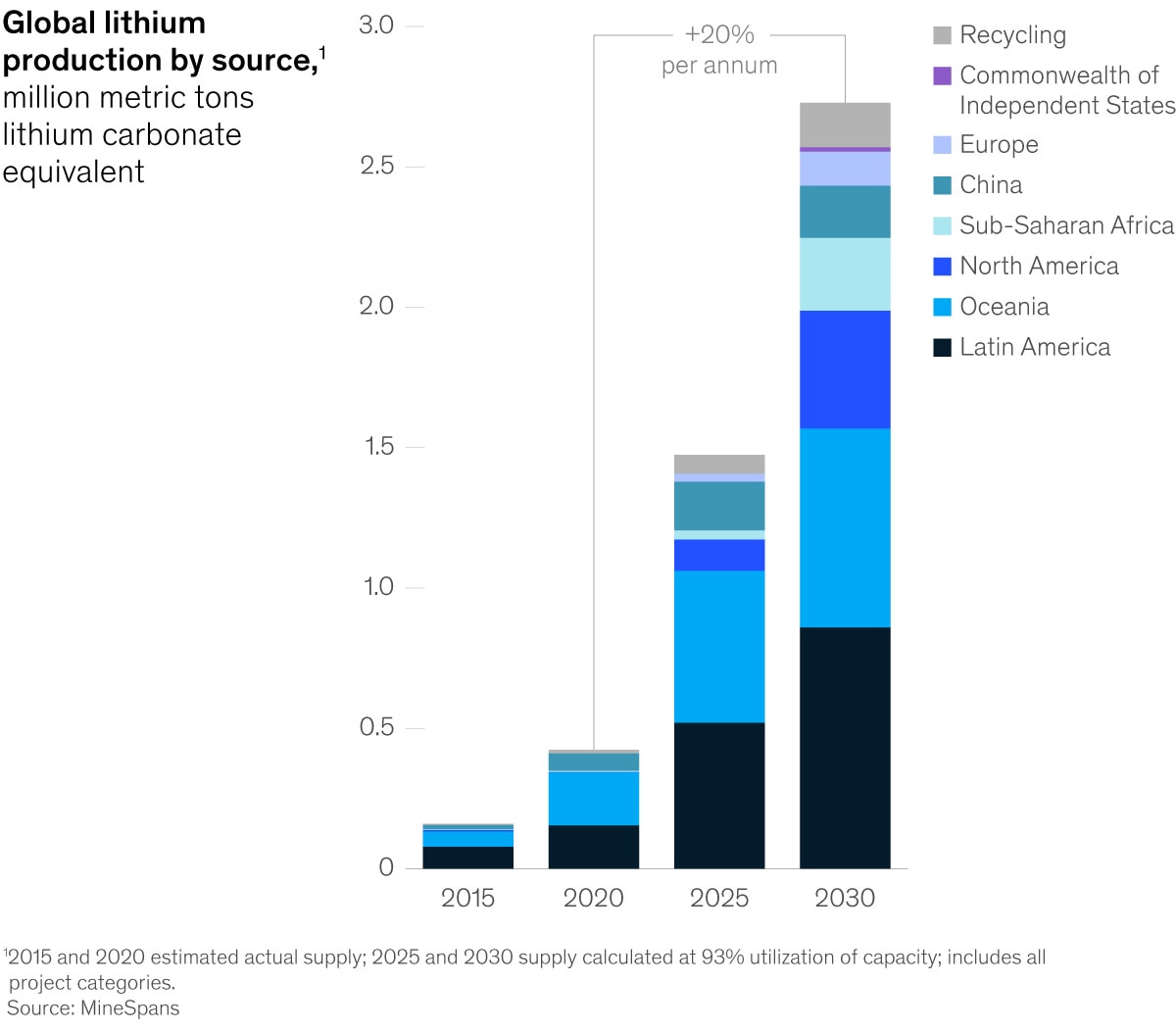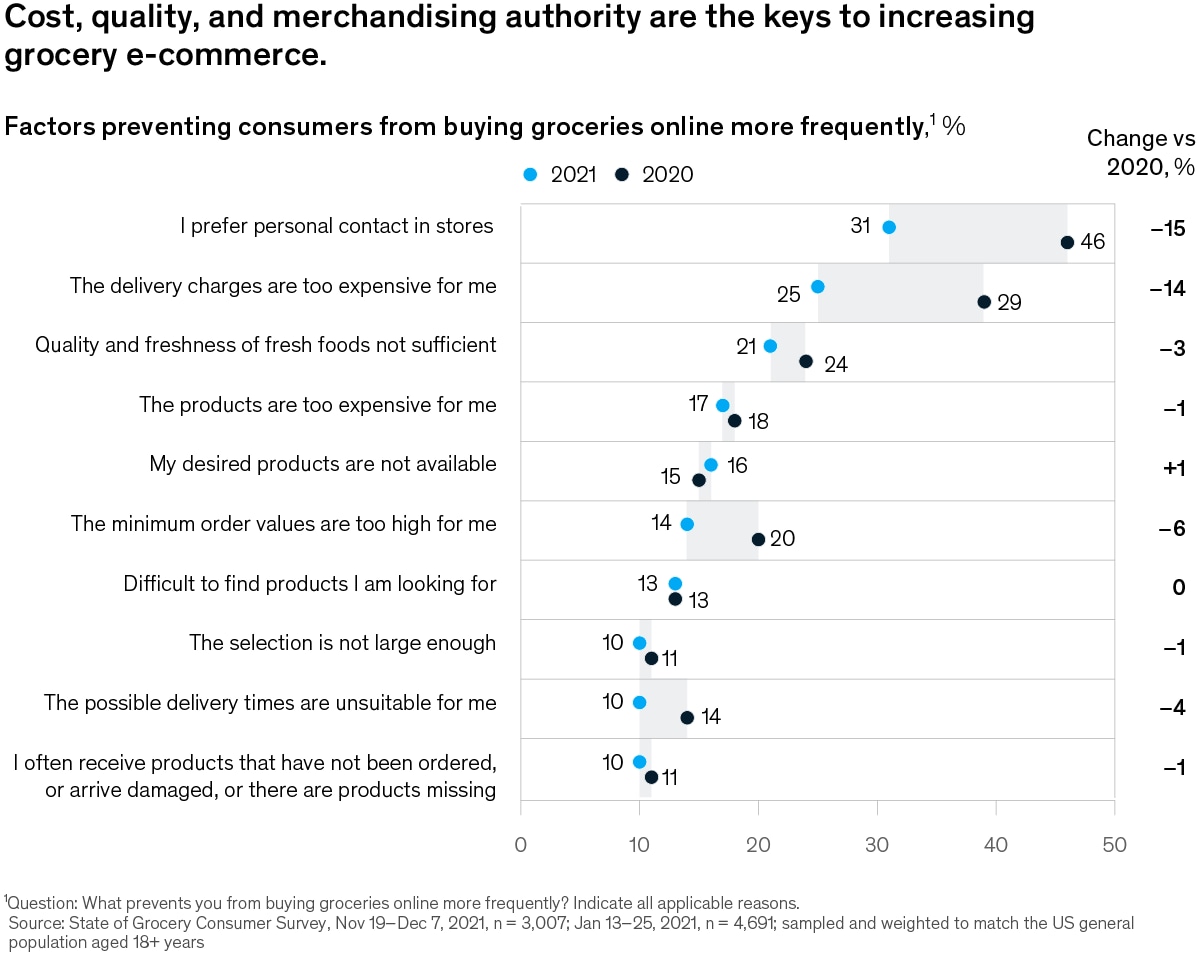Archives
- By thread 5363
-
By date
- June 2021 10
- July 2021 6
- August 2021 20
- September 2021 21
- October 2021 48
- November 2021 40
- December 2021 23
- January 2022 46
- February 2022 80
- March 2022 109
- April 2022 100
- May 2022 97
- June 2022 105
- July 2022 82
- August 2022 95
- September 2022 103
- October 2022 117
- November 2022 115
- December 2022 102
- January 2023 88
- February 2023 90
- March 2023 116
- April 2023 97
- May 2023 159
- June 2023 145
- July 2023 120
- August 2023 90
- September 2023 102
- October 2023 106
- November 2023 100
- December 2023 74
- January 2024 75
- February 2024 75
- March 2024 78
- April 2024 74
- May 2024 108
- June 2024 98
- July 2024 116
- August 2024 134
- September 2024 130
- October 2024 141
- November 2024 171
- December 2024 115
- January 2025 216
- February 2025 140
- March 2025 220
- April 2025 233
- May 2025 239
- June 2025 303
- July 2025 176
-
A look back on 20 years of McKinsey on Finance
the Daily read
Take a step back .
Share this email 



AN ARTICLE A DAY, PICKED BY OUR EDITORS 
It’s been 20 years since the release of McKinsey on Finance. The first issue was launched in the summer of 2001, and so much has happened in these two decades, including unprecedented technological advances, medical breakthroughs, financial crises, a global pandemic, and much more. Throughout this period of profound change, McKinsey on Finance has been guided by core economic and financial principles with a focus on long-term value-creation. As we look ahead to the next 20 years, get perspective on three of the most pressing challenges large companies face today and opportunities for the future. Be sure to check it out. — Joyce Yoo, digital editor, New York 
Reflections on 20 years of McKinsey on Finance—and three challenges ahead Revolutionary innovations, brilliant ideas, and climate imperatives will change everything—except the fundamentals of finance and economics. Take a step back 

Quote of the Day —Bill Osborne, outgoing president of New Zealand Rugby on connecting with stakeholders in a new episode of the Inside the Strategy Room podcast 
Chart of the Day 
See today’s chart 
Also New 

How the petrochemicals industry can benefit from advanced analytics Four key elements that can help companies launch advanced analytics and machine learning programs. Stay updated 


How Shanghai’s lockdowns are affecting global supply chains McKinsey’s Steve Saxon explains why severe restrictions in Shanghai reinforce the importance of diversification. Understand the issue 


The McKinsey Crossword: Rhymes with H | No. 78 7-Down: Completely disordered Play now 


Follow our thinking 



Share these insights Did you enjoy this newsletter? Forward it to colleagues and friends so they can subscribe too.
Was this issue forwarded to you? Sign up for it and sample our 40+ other free email subscriptions here.This email contains information about McKinsey’s research, insights, services, or events. By opening our emails or clicking on links, you agree to our use of cookies and web tracking technology. For more information on how we use and protect your information, please review our privacy policy. You received this email because you subscribed to the Daily Read newsletter. Manage subscriptions | Unsubscribe Copyright © 2022 | McKinsey & Company, 3 World Trade Center, 175 Greenwich Street, New York, NY 10007
by "McKinsey Daily Read" <publishing@email.mckinsey.com> - 05:13 - 3 Jun 2022 -
Business travel is taking off again. How can airlines avoid five common pitfalls?
McKinsey&Company
A better way to discount .

Competing in corporate travel In the news • Welcome aboard. After two years of virtual meetings, business travel is on the rise again. Hotel executives note that more company meetings and conventions have taken place over the past few months, and major airlines in the US report rising demand for corporate travel even though they’ve raised fares to offset higher fuel costs. For now, most business travelers aren’t going very far. Domestic business travel is rebounding fastest, while in business traffic Asia is lagging behind Europe. [NYT] • Revenge tourism. In 2019, corporate clients reportedly spent more than $1 trillion on business trips. The recovery of this crucial segment has picked up in recent months. One business travel firm that works with S&P 500 companies says that bookings have increased from about 20% of prepandemic volumes at the start of 2022 to more than 50%. But many passengers are buying business class tickets for recreational travel, so a key question remains: How much of this boost to business travel is from “revenge tourism”? [Bloomberg] 
Before slashing prices or offering steep discounts, airline leaders should be aware of five pitfalls in business travel sales so they don’t lose even more value. 
On McKinsey.com • The business of business travel. Compared with leisure travel, corporate travel is expected to take longer to rebound. Naturally, airlines are eager to accelerate this recovery. However, many carriers make the mistake of overrelying on discounts, which can cut into profits. Worse, if an airline decides to cut corners elsewhere to make up the difference, it may hurt its reputation and lose passengers. In an age where online reviews are just a click away, repairing this damage may be difficult. • Ask the right questions. Asking five questions can help airline leaders steer clear of common pitfalls as they try to bring back business travelers. If the answer to one or more of these questions is “yes” or “I don’t know,” airline executives might want to reconsider their corporate sales strategy. Read on for better ways to compete in corporate travel, from using data to confirm that corporate travel deals actually generate value to breaking down departmental silos that can undermine sales efforts. — Edited by Jason Li Boost business travel 
Was this forwarded to you? Sign up here. Or send us feedback — we’d love to hear from you. 

Follow our thinking 


This email contains information about McKinsey’s research, insights, services, or events. By opening our emails or clicking on links, you agree to our use of cookies and web tracking technology. For more information on how we use and protect your information, please review our privacy policy. You received this email because you subscribed to the On Point newsletter. Manage subscriptions | Unsubscribe Copyright © 2022 | McKinsey & Company, 3 World Trade Center, 175 Greenwich Street, New York, NY 10007
by "McKinsey On Point" <publishing@email.mckinsey.com> - 12:25 - 3 Jun 2022 -
Why investing in nurses pays off in excellent patient care
The Shortlist
Answering the call button .
Share this email 



Our best ideas, quick and curated | June 3, 2022 View in browser 
This week, we look at why high quit rates for nurses may imperil high-quality healthcare. Plus, new sources of lithium mining can help keep the electric-vehicle market moving, and how the war in Ukraine has caused 12 disruptions around the world. 
Care crisis. If you or a loved one have ever spent time in a hospital, you know the power of nurses to provide expertise and give comfort. But who is giving comfort to nurses, whose ranks have been stretched thin throughout the COVID-19 crisis? Over the past two years, McKinsey has found that nurses consistently, and increasingly, report planning to leave the workforce at rates higher than in the past decade. Supply–demand imbalance. Before the pandemic, the number of new nursing licenses in the US continued to grow at around 4 percent per year, infusing the nursing workforce with fresh talent to replace those who retired. In the latest McKinsey survey of healthcare professionals, 29 percent of registered nurses in the US (consistent with numbers in France, Japan, Singapore, and the UK) indicated that they were likely to leave their current role in direct patient care, with many saying they intended to leave the workforce entirely. This attrition rate, while bad for the nursing profession, also has broad implications for the overall US healthcare sector, which is already grappling with the challenges of caring for an aging population with an increasing number of chronic care needs. A growing gap. Earlier in 2022, 90 percent of COVID-19 Hospital Insights Survey respondents said workforce shortages were a barrier to addressing the increasing elective-surgery volume, up 11 percentage points from 2021. By 2025, McKinsey estimates that the US may have a gap of between 200,000 to 450,000 nurses available for direct patient care, equating to a 10 to 20 percent gap. To meet this demand, the US would need more than double the number of new graduates entering and staying in the nursing workforce every year for the next three years straight. Support on the front lines. While nurses respond to compensation as a factor in remaining in their positions, they say doing meaningful work is crucial. Factors such as feeling engaged by work and maintaining good health are also top drivers in surveyed nurses’ decisions to stay. What else would retain nurses? A McKinsey Frontline Workforce Survey in March 2022 revealed that nurses who had left direct patient care said a more manageable workload, increased total compensation, ability to take time off, and being more valued by an organization would be the most important factors they would consider when evaluating a return. There is no one-size-fits-all solution to the challenges of being a nurse. However, key stakeholders, such as healthcare providers, could focus on leadership support and better workforce planning and deployment. Positive leadership initiatives—such as directors doing rounds to show their support—have been correlated with higher retention, reduced medical errors, and administrative efficiency. If no actions are taken, there will be more patients in the US who will need care than there will be nurses available to deliver it. That’s a position that benefits no one. In the long run, investing in nurses is also an investment in patient care. 
OFF THE CHARTS Minding the gap in the lithium-mining map Lithium is the driving force behind electric vehicles, but will its supply keep pace with demand? New technologies and sources of supply can fill the gap. Currently, almost all lithium mining occurs in Australia, China, and Latin America, which account for a combined 98 percent of production in 2020. An announced pipeline of projects will likely introduce new players and geographies to the lithium-mining map. This reported capacity base should be enough for supply to grow at a 20 percent annual rate to reach over 2.7 million metric tons of lithium carbonate equivalent by 2030. 
Check out our chart of the day here. 

INTERVIEW Approach every situation with ‘a learner’s humility’ When Arundhati Bhattacharya retired as chairwoman of the State Bank of India in 2017, many observers thought her corporate journey had reached its end. But a few years into retirement, Bhattacharya became the CEO of Salesforce, India. Her move marked the beginning of a new professional chapter on several fronts: a shift from the public sector to the private sector, from banking to technology, and from a legacy Indian institution to an American software company. Yet, Bhattacharya has always believed that lifelong learning is the key to success. “When I think of the future, I see people having multiple careers,” she told McKinsey in a recent interview. “People will have to unlearn, relearn, and be on a learning curve for a very long time—in fact, for as long as they work.” 
MORE ON MCKINSEY.COM War in Ukraine | Twelve disruptions from the war in Ukraine are affecting people’s lives and livelihoods with potent force, and they should be part of every company’s scenario planning. The longer the war lasts, the more unpredictable such disruptions may become. State of fashion technology | As technological innovation accelerates, fashion companies can focus on harnessing technology to creativity, streamlining operations, and creating value from innovation that can be sustained in the years ahead. Addressing Europe’s corporate and technology gap | How can European countries tackle long-standing gaps in corporate performance and innovation? The answers lie in focusing on innovation in detail and in practice, technology by technology and sector by sector. 

TECH FOR EXECS Get your head in the cloud’s services: SaaS, PaaS, and IaaS McKinsey experts serve up a periodic look at the technology concepts that leaders need to understand to help their organizations grow and thrive in the digital age. What they are. Virtually every aspect of IT can now be leased as a service (aaS) via the internet from a host of providers. Cloud service providers, in particular, have expanded rapidly into the aaS world. Rather than having to buy, install, and manage an application, you can simply use it when you need it and let the provider handle the maintenance. These services change the face of IT costs, capabilities, speed, and responsiveness. Businesses can now access and begin using applications in as little as a few hours and avoid significant up-front investments in technology infrastructure that can quickly become obsolete. But the space has become an alphabet soup. SaaS (software as a service), PaaS (platform as a service), and IaaS (infrastructure as a service) are at the forefront of aaS offerings, leaving business executives scratching their heads over the differences among them—and which would best enable businesses to achieve their goals. We’re here to help make sense of it all. SaaS benefits. SaaS providers lease business software (for instance, customer-relationship-management systems like Salesforce, file managers like Box, and messaging systems like Slack) on a subscription basis, allowing for quick scaling and the flexibility to use the software only as long as needed. SaaS enables businesses to practically eliminate the costs of developing and maintaining applications on site. Quick and simple access to applications from any device can speed adoption and use and can increase worker productivity. SaaS limitations. SaaS software can be customized to a certain degree. However, the ability to innovate at the speed of markets means that businesses will likely need to up their technology innovation game beyond what SaaS providers were designed to provide. PaaS cloud service. Designed to support businesses’ need for in-house development capabilities without requiring reversion to significant IT infrastructure or new talent investments (such as SAP Cloud or Google App Engine), PaaS offers online access to servers, data centers, middleware, and software development and project management tools. Like with SaaS offerings, the pay-as-you-go structure allows companies to scale up or down almost instantly as markets or customer expectations change. PaaS can significantly accelerate a company’s time to market; businesses that have adopted it report bringing new capabilities to market around 20 to 40 percent faster than do companies that haven’t. Organizations can also lift and shift legacy applications to a PaaS so that they can retire server farms and reduce software license expenses. IaaS access. IaaS has swooped in to offer virtual access to computing, storage, and networking resources (for example, Amazon Web Services and Microsoft Azure) so that businesses will not have to return to buying hardware to support all their new applications and tooling. IaaS providers enable businesses to increase or decrease capacity as needed, serving as a particularly valuable resource for data management and compute power, especially if the volume is soaring or unpredictable. Minding the economic pitfalls. These aaS offerings are by no means plug and play. Shifting to the cloud requires executives to carefully consider how these services support strategy and mesh with each other and existing IT hardware. Some companies have made costly mistakes when dealing with the economics of cloud services, often because business leaders try to apply old-school, on-site computing economics to them. McKinsey’s cloud calculator is one tool that can help you determine the right strategy for aaS offerings. What technology concepts would you like us to help explain next? Let us know. — Edited by Barbara Tierney Share this Tech For Execs 



BACKTALK Have feedback or other ideas? We’d love to hear from you. 
Tell us what you think 

Follow our thinking 



Share these insights Did you enjoy this newsletter? Forward it to colleagues and friends so they can subscribe too.
Was this issue forwarded to you? Sign up for it and sample our 40+ other free email subscriptions here.This email contains information about McKinsey’s research, insights, services, or events. By opening our emails or clicking on links, you agree to our use of cookies and web tracking technology. For more information on how we use and protect your information, please review our privacy policy. You received this email because you subscribed to The Shortlist newsletter. Manage subscriptions | Unsubscribe Copyright © 2022 | McKinsey & Company, 3 World Trade Center, 175 Greenwich Street, New York, NY 10007
by "McKinsey Shortlist" <publishing@email.mckinsey.com> - 12:06 - 3 Jun 2022 -
Unlocking the value of human capital
the Daily read
Follow the knowledge .
Share this email 



AN ARTICLE A DAY, PICKED BY OUR EDITORS 
Human capital—the strength of all the collective knowledge, attributes, skills, experience, and health of its workforce—is the most vital resource for any organization or economy. Individuals accumulate human capital throughout their working lives, and taking on new roles helps them become upwardly mobile. In fact, work experience can contribute to 40-60 percent of the average individual’s lifetime earnings. But making bold moves that stretch a worker’s potential is not possible unless employers take a chance on hiring them and provide opportunities. Don't miss a new report on how to unlock the power of your people. And to learn more about the research, be sure to register for a virtual event on June 15. — Sarah Skinner, digital editor, New York 
Human capital at work: The value of experience Human capital represents two-thirds of wealth for the average individual—and work experience contributes almost half of that value. Follow the knowledge 

Quote of the Day “We found that women are not doing [nonpromotable] work because they really enjoy it or care more about doing the work. . . . Rather, it’s because we all have the expectation that women will do this work. That collective expectation is held by managers and people who are asking them to do this work. ” —Lise Vesterlund, director of the Pittsburgh Experimental Economics Laboratory in a new Author Talks interview 
Chart of the Day 
See today’s chart 
Also New 

Innovation sourcing in biopharma: Four practices to maximize success Biopharma companies’ pipelines are full of assets they source externally to access innovation. Four practices will help ensure their investments flourish at a time of fierce competition. Understand pharmaceutical innovations 


Addressing unequal opportunity in an American city Spatial inequality limits opportunities for millions of Americans. How can companies leverage their unique positions to promote sustainable, inclusive growth in the communities they call home? Build a better future 


How banks can reimagine lending to small and medium-size enterprises If banks reimagine and modernize their business-lending processes, they can take advantage of new opportunities with SMEs and capture more of the forecast growth. Take a new approach 


Follow our thinking 



Share these insights Did you enjoy this newsletter? Forward it to colleagues and friends so they can subscribe too.
Was this issue forwarded to you? Sign up for it and sample our 40+ other free email subscriptions here.This email contains information about McKinsey’s research, insights, services, or events. By opening our emails or clicking on links, you agree to our use of cookies and web tracking technology. For more information on how we use and protect your information, please review our privacy policy. You received this email because you subscribed to the Daily Read newsletter. Manage subscriptions | Unsubscribe Copyright © 2022 | McKinsey & Company, 3 World Trade Center, 175 Greenwich Street, New York, NY 10007
by "McKinsey Daily Read" <publishing@email.mckinsey.com> - 05:07 - 2 Jun 2022 -
Forward Thinking on measuring the value of the digital age with Avinash Collis
McKinsey&Company
Innovate the process .
Share this email 



New from McKinsey Global Institute 
Forward Thinking on measuring the value of the digital age with Avinash Collis Born in India and now a professor in Texas, Avinash Collis talks about his work on creating a data dashboard that will enable us to measure the true value of the digital age. Innovate the process 


Explore this and future episodes of the McKinsey Global Institute’s Forward Thinking podcast on our site, and subscribe to ensure you never miss a new one. Subscribe via Apple Podcasts, Google Podcasts, Spotify, Stitcher, and Amazon Music. 
Related Reading 
Democratizing technology with Anne-Marie Imafidon 

Explore The McKinsey Download Hub 


Follow our thinking 


McKinsey Insights - Get our latest
thinking on your iPhone, iPad, or Android


Share these insights Did you enjoy this newsletter? Forward it to colleagues and friends so they can subscribe too.
Was this issue forwarded to you? Sign up for it and sample our 40+ other free email subscriptions here.This email contains information about McKinsey’s research, insights, services, or events. By opening our emails or clicking on links, you agree to our use of cookies and web tracking technology. For more information on how we use and protect your information, please review our privacy policy. You received this email because you subscribed to our McKinsey Global Institute alert list. Manage subscriptions | Unsubscribe Copyright © 2022 | McKinsey & Company, 3 World Trade Center, 175 Greenwich Street, New York, NY 10007
by "McKinsey Global Institute" <publishing@email.mckinsey.com> - 04:04 - 2 Jun 2022 -
Nine industries could lead the way toward a net-zero future. Here’s how.
McKinsey&Company
New businesses, technologies, and solutions .

A net-zero world In the news • Buying green. An alliance of around 50 businesses has committed to buying green materials, such as low- or no-carbon steel, by 2030. At the World Economic Forum Annual Meeting in Davos, Switzerland, the First Movers Coalition—a group whose members are collectively valued at more than $8.5 trillion—announced that it seeks to cut emissions in heavy industry by investing in climate tech and creating a market for environmentally friendly materials, such as low-carbon cement. Aluminum, aviation, cement, chemicals, and steel today make up about 30% of the world’s emissions. [NYT] • Hydrogen hubs. Climate scientists think that clean hydrogen could become an important source of zero-emission energy in industries that typically depend on fossil fuels. That’s why “hydrogen is crucial” in the fight against climate change, according to one professor and climate change researcher. But making hydrogen in a clean and cost-effective way has so far been difficult. The US Bipartisan Infrastructure Law, passed in 2021, funnels $8 billion to establish hydrogen hubs to generate, store, and use clean hydrogen. [NPR] 
Over the past decade, the costs of renewables have dropped substantially (solar power by as much as 80%), making them competitive with conventional fuels. 
On McKinsey.com • Nine key industries. Decarbonizing emission-intensive industries may be challenging, but McKinsey research shows that solutions are within reach. Nine key industries—power, oil and gas, automotive, aviation and shipping, steel, cement, mining, agriculture and food, and forestry and land use—could lead the way to a net-zero economy. More than 50% of the world’s power could come from renewable sources (such as solar, hydro, and wind) by 2035, McKinsey analysis finds. • Transformation ahead. Electric-vehicle sales, along with planned production of low-emission cars, are surging. McKinsey estimates that virtually all new passenger vehicles sold in China, the EU, and the US will be electric by 2035. But getting to that point will take some effort: companies (and car owners) will need new supply chains, manufacturing know-how, and infrastructure, such as charging stations and hydrogen-fueling sites. That’s just one example covered in McKinsey’s net-zero guide for nine critical industries. — Edited by Belinda Yu See paths to net zero 
Was this forwarded to you? Sign up here. Or send us feedback — we’d love to hear from you. 

Follow our thinking 


This email contains information about McKinsey’s research, insights, services, or events. By opening our emails or clicking on links, you agree to our use of cookies and web tracking technology. For more information on how we use and protect your information, please review our privacy policy. You received this email because you subscribed to the On Point newsletter. Manage subscriptions | Unsubscribe Copyright © 2022 | McKinsey & Company, 3 World Trade Center, 175 Greenwich Street, New York, NY 10007
by "McKinsey On Point" <publishing@email.mckinsey.com> - 12:14 - 2 Jun 2022